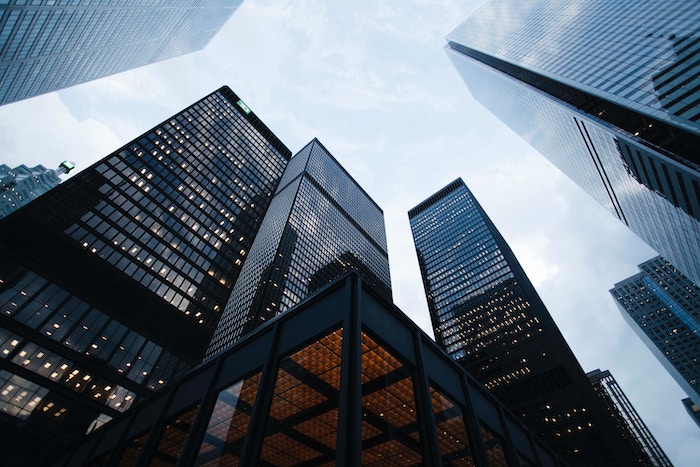Sick Building Syndrome (SBS) is a condition that can cause people to experience symptoms while in a building due to experiencing poor air quality or as a reaction to some element in the indoor environment. Symptoms of SBS can include headaches, fatigue, eye and throat irritation, dizziness, respiratory problems, and skin irritation. Usually symptoms will improve or disappear once the person suffering from SBS leaves the building. These issues often affect more than one individual in the building. In this blog post, we will explore some of the common causes of Sick Building Syndrome, the symptoms you should be aware of, as well as preventative measure that can reduce the risk of SBS.
Sick Building Syndrome was identified in the 1970s when similar occurrences were reported detailing health issues happening among residents of certain buildings and offices. The health issues of individuals in these building were similar and seemed to be connected with time spent inside those indoor spaces. No underlying diseases were discovered, which led to the identification of SBS. The actual term Sick Building Syndrome was coined in the 1980s by the World Health Organization (WHO).
Causes of Sick Building Syndrome
The root of SBS is not always fully understood or identified, although there are multiple possible components that can result in the diagnosis of Sick building syndrome.
- Poor ventilation
- Volatile organic compounds (VOCs)
- Dust
- Synthetic building materials
- Insufficient cleaning
- Allergens due to indoor plants, soil, etc
- Mold
- Cleaning products
- Pesticides
One of the root causes of SBS may be due to poor ventilation. This allows for the air to remain stagnant, and can cause a buildup of pollutants and other irritating factors. Stagnation and moisture levels can also contribute to mold growth, which is a common cause of Sick Building Syndrome.
Symptoms of Sick Building Syndrome
There is a range of symptoms and severity of Sick Building Syndrome, which varies within individuals. Some people will have much more severe reactions and symptoms than others. Some of the most common symptoms include headache, fatigue, respiratory issues, dizziness, eye and skin reactions, as well as nausea and brain fog. A list of health issues that you may want to discuss with your health care practitioner and may suggest Sick Building Syndrome are:
- Headache: Recurring headaches, especially while in the building, are very common symptoms of Sick Building Syndrome.
- Fatigue: Unexplained and persistent tiredness may be a factor in SBS.
- Respiratory issues: Respiratory problems are very common in SBS, even for people who do not have any pre-existing respiratory conditions.
- Skin problems: Certain skin issues can present in SBS, such as itching, dryness, and rashes.
- Irritated eyes: Indoor air pollutants can cause eye irritation. This can include redness, dryness, itching, burning sensation, and blurred vision.
- Brain fog: Cognitive issues such as difficulties in focusing, memory problems, and concentration reduction, can result from SBS.
- Nausea: Persistent nausea occurring while in the building may be SBS.
- Dizziness: Mild to severe dizziness can be a symptom of SBS.
- Allergic reactions: Allergies from being in the indoor environment, or allergies worsening within the building, may suggest a connection to Sick Building Syndrome.
- Odor sensitivity: Sick Building Syndrome may cause symptoms of odor sensitivity when the smells in the building are present.
Prevention of Sick Building Syndrome
Air Quality
The best approach when it comes to Sick Building Syndrome is prevention. This starts with proper ventilation and fresh air flow within the building. Employing an air filtration system can help improve air quality. Using low-emission building materials is possible method to improve the indoor air quality. Opening windows is another way to increase the air flow and ventilation.
Cleaning
Adequate cleaning and hygiene is a crucial part of maintaining a healthy building. Maintenance like carpet cleaning, dusting, cleaning and keeping ventilation ducts in good working order, all contribute to reducing risk of sick building syndrome. Additionally, staying away from using materials that are high in VOCs and other harmful items will help keep the air cleaner and safer for humans and animals to inhabit.
Humidity
Humidity control is a crucial part of maintaining a healthy indoor environment. Indoor humidity levels should be kept between 30-50 percent, if possible, to keep a comfortable moisture level and to prevent mold and mildew growth. If humidity levels are about 50 percent, a dehumidifier can be used to achieve a lower level.
Water Damage
Water damage can directly contribute to SBS by causing mold growth as well. Making sure the building has no leaks, flooding, or plumbing issues can help prevent mold issues and reduce the chance of SBS. It does not take long for mold to develop once water has intruded into a building, so acting quickly to mitigate any water issues is very important.
Education and Awareness
Many of these maintenance protocols are the responsibility of the owners and employers to implement. Education on Sick Building Syndrome is key to gaining support of employees and others, and putting into practice the methods needed to maintain a healthy indoor environment to work and live in. Proper cleaning and good hygiene promotes a better working and living conditions, thus reducing the risk of Sick Building Syndrome.
Conclusion
Sick Building Syndrome is a common and preventable health concern. Despite it being hard to determine the exact cause, it can cause very serious health complications for those who are in the unhealthy indoor environment. There are many components that can be the cause of Sick Building Syndrome, such as poor ventilation, synthetic materials and off-gassing of VOCs, high humidity levels, water damage, and poor cleaning methods. To reduce the risk of Sick Building Syndrome, education and implementation of regular cleaning and maintenance habits is key.


